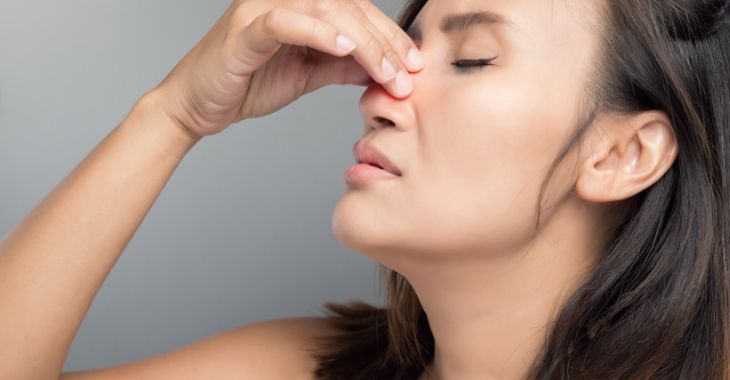Can Flying Cause Sinus Problems?

Anyone who has flown for travel knows that changes in pressure can be felt in the nose, ears and sinus region. For those with allergies or sinus issues, the change in air pressure and quality can be felt more acutely. While flying may not cause sinus problems, it certainly can contribute to additional pain and discomfort.
Air expands at higher altitudes. This is true, even in your sinus cavities. If you already have constricted sinus passages, the expanding air can cause painful sinus pressure. In addition, the air inside the cabin of the plane tends to be drier, which can trigger additional sinus issues. Dry air is a major cause of sinus infections and other sinus problems.
Reducing Sinus Discomfort When Flying
There are a few things you can do to reduce sinus pain and discomfort when flying. For one, you can lubricate and decongest your sinuses before a flight. Use saline solution for lubrication and a nasal decongestant before you fly. Also, keep your body and nasal passages hydrated. You should drink plenty of water during your flight and add a warm beverage like tea. Water keeps your body hydrated and the steam from a hot beverage can help moisten your nasal passages.
If you have reoccurring sinus problems, you may have chronic sinusitis. While treating the symptoms can give you some relief during your normal activities and even when flying, getting treatment can give you long-term relief. Non-invasive procedures like balloon sinuplasty or other treatment options can expand your sinus cavities and offer relief.
Keep sinus issues at bay during your next trip by following some of these tips. If you have ongoing sinus issues, seek the advice and treatment of a sinus specialist to offer long-term solutions.
Posted on behalf of:
New York Sinusitis Treatment
200 W. 57th Street Suite 1410
New York, NY 10019
(212) 784-6643
The information provided on this website, including text, graphics, images, and other materials, is intended solely for informational purposes and should not be used as a substitute for professional medical advice, diagnosis, or treatment.



)